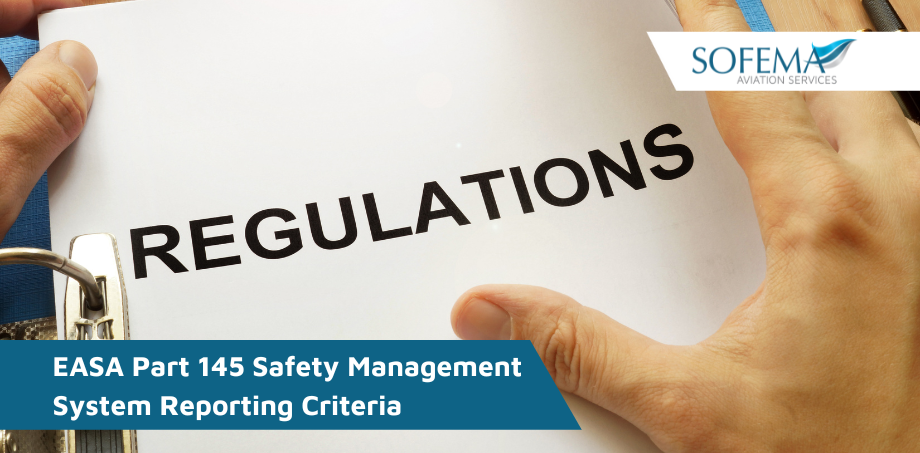Sofema Aviation Services (SAS) www.sassofia.com reviews Reporting Criteria identified by Commission Implementing Regulation (EU) 2015/1018 of 29 June 2015
Maintenance and Continuing Airworthiness Management
- Serious structural damage (for example: cracks, permanent deformation, delamination, debonding, burning, excessive wear, or corrosion) found during maintenance of the aircraft or component.
- Serious leakage or contamination of fluids (for example: hydraulic, fuel, oil, gas, or other fluids).
- Failure or malfunction of any part of an engine or powerplant and/or transmission resulting in any one or more of the following:
(a) non-containment of components/debris;
(b) failure of the engine mount structure.
- Damage, failure, or defect of a propeller, which could lead to in-flight separation of the propeller or any major portion of the propeller and/or malfunctions of the propeller control.
- Damage, failure, or defect of the main rotor gearbox/attachment, which could lead to in-flight separation of the rotor assembly and/or malfunctions of the rotor control.
- Significant malfunction of a safety-critical system or equipment including an emergency system or equipment during maintenance testing or failure to activate these systems after maintenance.
- Incorrect assembly or installation of components of the aircraft found during an inspection or test procedure not intended for that specific purpose.
- Wrong assessment of a serious defect, or serious non-compliance with MEL and Technical logbook procedures.
- Serious damage to Electrical Wiring Interconnection System (EWIS).
- Any defect in a life-controlled critical part causing retirement before completion of its full life.
- The use of products, components, or materials, from an unknown, suspect origin, or unserviceable critical components.
- Misleading, incorrect or insufficient applicable maintenance data or procedures that could lead to significant maintenance errors, including language issues.
- Incorrect control or application of aircraft maintenance limitations or scheduled maintenance.
- Releasing an aircraft to service from maintenance in case of any non-compliance which endangers flight safety.
- Serious damage caused to an aircraft during maintenance activities due to incorrect maintenance or use of inappropriate or unserviceable ground support equipment that requires additional maintenance actions.
- Identified burning, melting, smoke, arcing, overheating, or fire occurrences.
- Any occurrence where human performance, including fatigue of personnel, has directly contributed to or could have contributed to an accident or a serious incident.
- Significant malfunction, reliability issue, or recurrent recording quality issue affecting a flight recorder system (such as a flight data recorder system, a data link recording system, or a cockpit voice recorder system) or lack of information needed to ensure the serviceability of a flight recorder system.
Now consider how we make this information available to our workforce – how to ensure everyone is aware of these requirement’s – how do you think we should share this information?
Next Steps
Follow this link to our Library to find & Download related documents for Free.
Sofema Aviation Services (www.sassofia.com) Provides Safety Management System Consultancy, Classroom, Webinar, and Online Training including a 3-day SMS Safety Risk Management course. For additional support, please see our website or email team@sassofia.com
Tags:
(EU) 2015/1018, Airworthiness, aviation, Aviation Maintenance, Aviation Safety Management System, Aviation SMS, Commission Regulations (EU) 2015/1018, continuing airworthiness management, EASA, EASA Part 145, Part 145, Part 145 SMS




